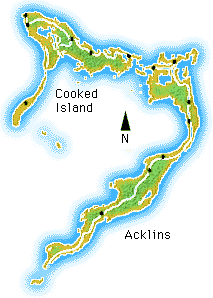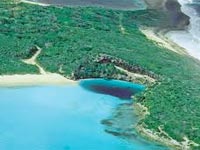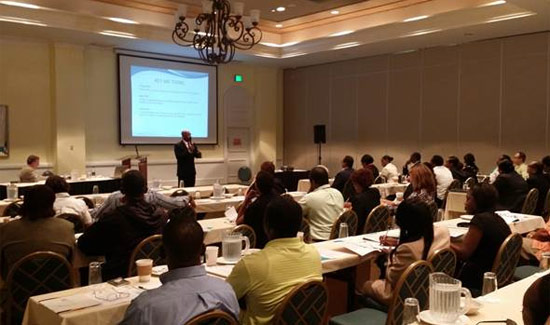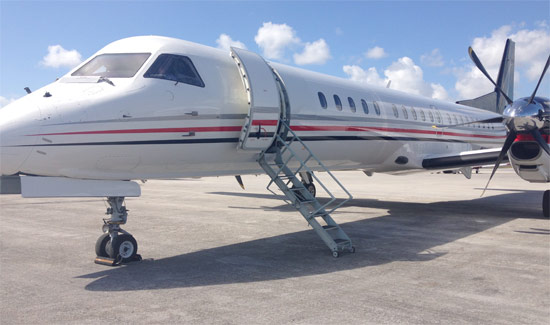 I have been a visitor on Crooked Island from October 2012 to the present date. I must say that my visit has been filled with the highs and lows of excitement, socializing, disappointments and extreme concern about what is an apparent and obvious danger that can result in serious accidents, injuries or, God forbid, fatalities.
I have been a visitor on Crooked Island from October 2012 to the present date. I must say that my visit has been filled with the highs and lows of excitement, socializing, disappointments and extreme concern about what is an apparent and obvious danger that can result in serious accidents, injuries or, God forbid, fatalities.
Upon my arrival to the small southern island I was greeted by many at the airport, some of whom introduced themselves to me as I worked my way through what appeared to be a greeting committee. By the way, I was also amazed and comforted by the absence of the stringent airport checks and scrutiny we have become so accustomed to in this post “9/11” era.
As I toured the island in an attempt to explore, discover and mingle with the natives, I made some blatantly disturbing observations on this beautiful, tranquil slice of paradise in the southern Bahamas.
First and foremost, the few roads on the island are plagued with a number of small but absolutely vital and easily corrected infractions. These infractions relate to road safety practices to ensure the safety of all drivers, cyclists and pedestrians.
The first obvious and shocking discovery was the absence of stop, yield and warning signs on the roads. There are many sharp and winding curves present in the construction of the roads with no warning signs as one approaches. There are few speed limit signs on the island, and upon questioning I was informed that all the inhabitants know the various speed limits.
Be that as it may, what about the foreign visitor like myself? Moreover, if the assumption of knowing the speed limit(s) is true (or not), there are many vehicles consistently traveling in excess of the 45 m.p.h. island-wide speed limit.
Next, I was in total disbelief that there were no dividing lines for the two lanes of each road as they all do indeed accommodate “two-way” traffic, even those the width of a single vehicle. It is apparent that the roads (most of them) were designed for single-vehicle travel and dividing center lines would force both vehicles on to the side shrubs off the road. In traveling to the Cove one will notice the road’s width shrinking as the shrubs and small trees overhang the road from both sides cutting off approximately some four to six feet (or two to three feet from each side).
Upon approaching those sharp and winding curves, one’s vision of the curve is impeded again by vegetation growth extending into the road. In most cases, if the shrubbery were kept cut, a driver would probably be able to not only observe the approaching curves, but the on-coming vehicle even before it comes around the curves (as they are so sharp).
I noticed from a reasonable distance that most approaching vehicles come around these curves too fast and end up in what would be the right-hand (or my) lane. No warning signs, no speed bumps (to slow impatient speeding drivers) and poor visibility of the curve are indeed the recipe for an unsuspecting visitor’s disaster. Moreover, upon questioning I was told that the island lacks an air emergency transport service to Nassau which houses the nearest trauma center in The Bahamas in the event of a life-threatening injury or health situation.
Generally speaking, the overall road conditions are below average. However, there are two roads that are in extremely poor (or what could be hazardous) condition. These are the “Boggy-Pond” and the “Colonel Hill” roads as they both are riddled with gaping potholes (craters in some areas) which an unsuspecting visitor on a motorbike could be seriously injured (or even killed) in at nighttime; or the visitor could find him/herself having to treacherously navigate and negotiate these pitfalls during daylight.
Finally, the beaches of the island are very beautiful but I could not help but notice and inquire of the accumulated trash (garbage) on some of the beaches, which was brought in by the sea, the natives explained. There are many tires, plastic bottles, plastic trays and bags, PVC pipes, etc. I was shocked to learn that there was no private or government service contracted to ensure the cleaning and upkeep of these once pristine beaches.
Disappointment settled in when the lack of civic mindedness among the islanders seemed apparent. It might be good if the inhabitants would form a large volunteer group which could be sub-divided into smaller groups of perhaps eight to 10 peoples with a rotation-type of schedule for maintaining the beaches.
If the citizens of Crooked Island are not prepared to take a leap of faith and show others (including visitors and tourists) that they are passionate about preserving their natural resources and all the island has to offer, how could they expect economic growth and stability (especially in these trying times)?
They must understand that if only 10 tourists came here in 2012 and all road issues were addressed, the beaches, resorts, bars and restaurants, rental vehicles all very well maintained, then in 2013 those 10 visitors would tell and invite a minimum of 10 new potential visitors and the growth of visitors would compound annually providing the visitors are treated with respect, shown love and experience value for their dollars.
By: Concerned Visitor



